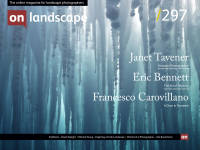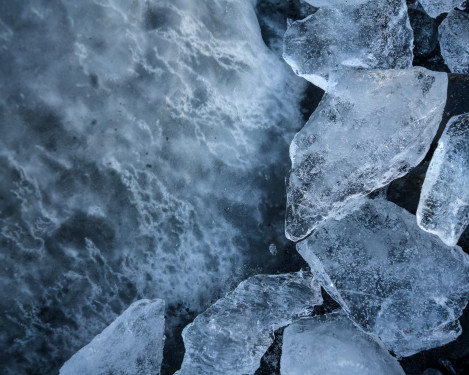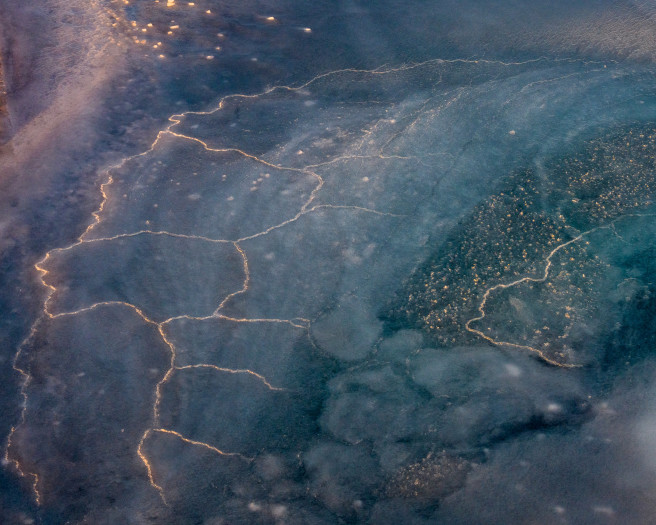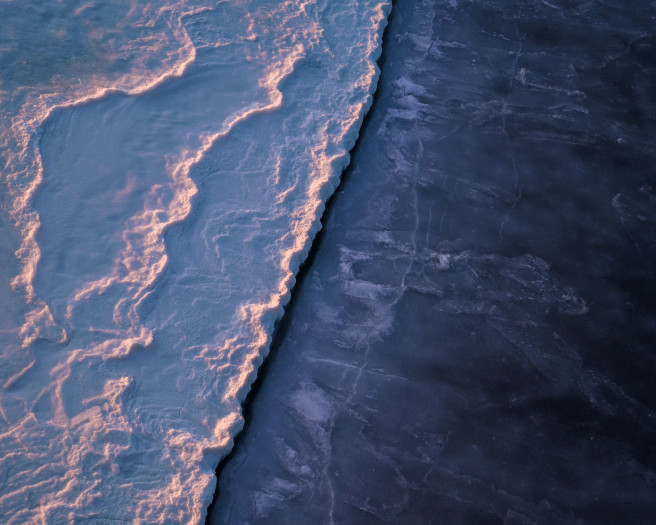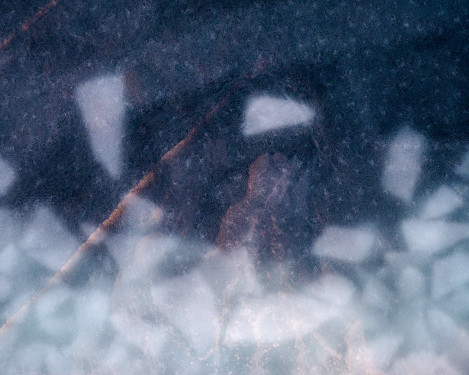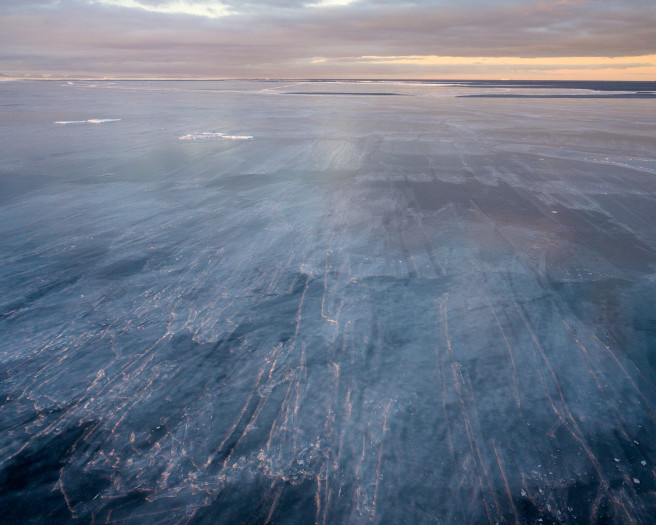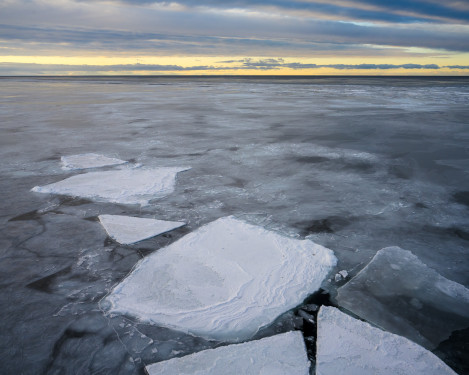No constraints or boundaries

Richard Young
Richard Young is a full-time nature & landscape photographer based in Wanaka, New Zealand and is the founder of New Zealand Photography Workshops. His vision has developed from years of capturing the grand vista to focus on an emotional and expressive engagement in the landscape he works in—to produce distinct and personal bodies of work.
When I first started landscape photography, much of my work was inspired by subjects and locations. In more recent years, my approach to photographing landscapes has evolved to become more expressional and emotional. The lure of iconic destinations no longer has the appeal it once did. And in the same vein, the lure of new locations has also diminished.
My attitude changed when I came to the realisation that to understand a landscape, it’s crucial to spend time immersed in it before I can begin to convey aspects of it through my photography and create more personal bodies of work.
During the last ten years, I have done very little photography-related travel. Most of my photography has taken place where I live, in New Zealand. I have a set of locations that I love and keep returning to again and again. I’ve got to know these places well and also use them for my workshops. You’d think perhaps that familiarity would lead me to plan the types of images that I hope to create—or that my approach to photographing there might become quite fixed—but the opposite has been true. By really getting to know a place, I’ve heightened my sense of exploration.
I revisit these revered landscapes with a completely open mind, which enables each visit to present new opportunities for experimentation - to play around with the story I want my photographs to tell. The constraints of having to find new paths that lead to expression have enhanced my creativity, and I’ve done some of my best work within these familiar places. Not since 2012, when I travelled across Africa for a couple of months on a photography trip, have I travelled overseas specifically to take photographs. This insight might seem surprising for a full-time landscape photographer. My travels abroad since then have mostly been without my camera. I’ve chosen to treat these trips as holidays or travel experiences, not as a time to work on my photography. I don’t feel the need to photograph every landscape I visit. I prefer to be more engaged with the landscapes I photograph, taking the time to explore and form a connection, a relationship with the place.
So, when contemplating working on an expedition in Antarctica, the location appealed to me greatly. I had always wanted to visit and photograph this unique landscape. But, at the same time, I also felt a sense of hesitation and uncertainty as I didn’t quite know the direction I wanted to take with my photography whilst there. I also could not imagine how the images I would create could fit within existing bodies of work. However, I was excited by the potential to explore an expressive approach in a fresh landscape.
Whilst considering the interesting challenge that lay before me, I thought about my New Zealand-based work and what unites it. It is not the New Zealand landscape—the location as a subject—that is the defining factor for my work. For me, it’s much more about exploring my relationship with the landscape which leads to my style. There is freedom that comes with the fact that my work is not about the landscape itself. It was an interesting challenge, considering how to shoot images of a very different landscape in a way that expressed their individual stories and meaning while offering continuity of style.
While considering the expedition to Antarctica, I decided I’d also like to create a fresh body of work that conveyed context about Antarctica and included my personal experience of being there—but the exact nature was difficult to define before visiting. It felt impossible to envisage until I’d spent time in the vast, icy expanse and been able to process the vistas, their energy, and the associated thoughts and feelings that would ignite ideas that would form an approach to creative expression.
The 28-day voyage would depart from New Zealand and sail south to the Ross Sea via the Sub-Antarctic Islands. Going to the Antarctic for the first time, I knew that during the first 12 days we’d have in the Antarctic Circle it would be extremely challenging to be able to see, experience and process all the elements of this completely new environment. I knew that creating and refining a narrative that could inform the basis for a new collection of work—expressing meaning, context and depth—would be a challenge within the limited timeframe. It was unlikely I would be able to return to build a stronger relationship and connection with the place and allow my thoughts to percolate and evolve.
I find it isn’t possible to tell a story from a first impression. A story needs to unfold in layers, requiring a continuous cycle of reflection. An additional element to the challenge would be having no constraints or boundaries initially. These would need to be defined once I had a level of familiarity with the place. With previous collections, the creative process has been refined via multiple visits and opportunities to reflect and recalibrate the messages I want to express and how I think I can achieve that. The question continually resonated in my mind, ‘How much could I achieve on just one trip to the ice?’
As we traversed the wild Southern Ocean, I could feel the anticipation building, and as we crossed the Antarctic Circle, I felt quite overwhelmed. There were photographs to be made everywhere! Grand, icy vistas, icebergs, ice patterns and, of course, wildlife. I found myself creating lots of images - it’s something we all often find ourselves doing when experiencing exciting new places. I was conscious they weren’t all going to be photographs that would represent me as a photographer; I was simply enjoying recording the landscape and my memories.
After returning to New Zealand, I reflected on the trip. Photographically, had it been a success? Did I come away with images that I’m happy with? I feel that ‘success’ in photography is very difficult to define. I can easily create an image of a magnificent landscape that would receive attention on social media - but I know this type of image is unlikely to hold any deep personal meaning for me, and that I would use it to convey my style. So the answer to my question is, sure, I did come away from Antarctica with several images that were successful, including some of the wildlife—something I have chosen not to focus my photography on in recent years.
Some of the images I took illustrate elements of my personal style, but, at the same time, similar images were created by other photographers on the expedition, and I did not feel these offered a unique perspective. But there were also photographs I made that could sit within and complement existing bodies of work created throughout different environments here in New Zealand. Thinking about this, it was simple to envisage how these photographs would work within existing collections as I have a deep understanding of the messages I intend to convey. I didn’t have a preconceived approach, but I did have defined constraints around the subject, compositional elements and lighting within individual portfolios. So, when opportunities arose, I saw images that would add depth to my previous collections, rather than offering an alternative expression in a different environment.
After being back home for about a month. I hadn’t looked through the images I’d made in Antarctica in any detail as I knew I needed some distance from these. Having shot so many images, I’d felt quite overwhelmed going through them, but I was incredibly excited about the prospect of developing a new and very different collection. One of my first photographs of Antarctica provided the inspiration to form the basis of a new collection that I had wanted to evolve. During the rest of the trip, I made subsequent photographs in this style to be able to collate and refine the beginnings of a new series.
This may be a landscape I never return to, and if I did may not offer the same lure of visiting an unknown destination—seeing things for the first time—and maybe a little bit of that magic will be lost. But, I feel that I now understand this environment and how I wish to photograph it—and hopefully, I can make more images to build a portfolio of work from Antarctica. If I do ever return, perhaps I’ll see the landscape in a very different way or just start working on a completely new set of images, and the idea I have of extending this body of work will go out the window as I start again from scratch. But this is the thing I love about returning again and again to the same location: it’s the chance to be able to explore it more expressively, to see things you wouldn't and couldn’t have seen the first time, and move away from just representing it to understanding it and being able to express your relationship with the landscape.

